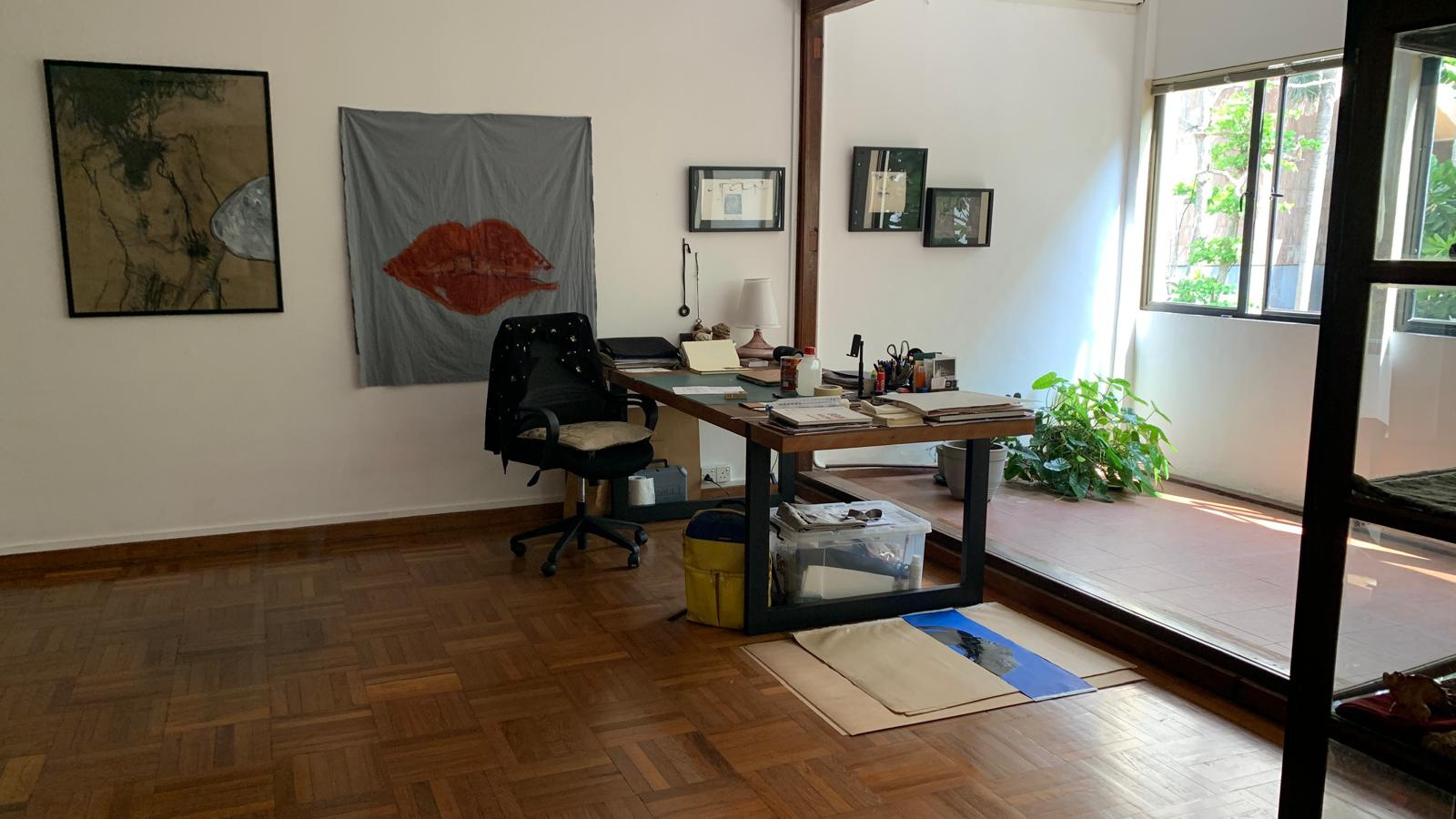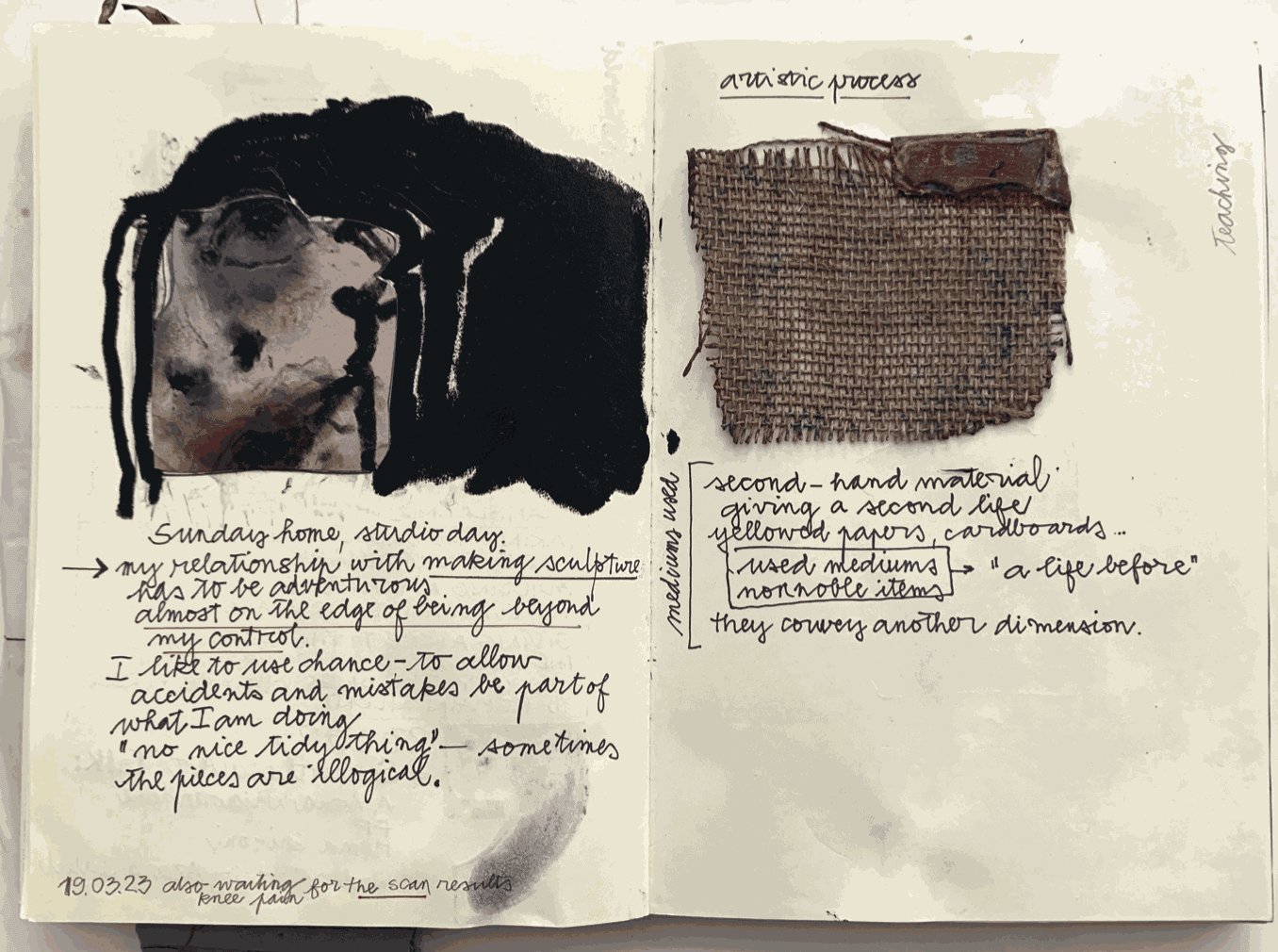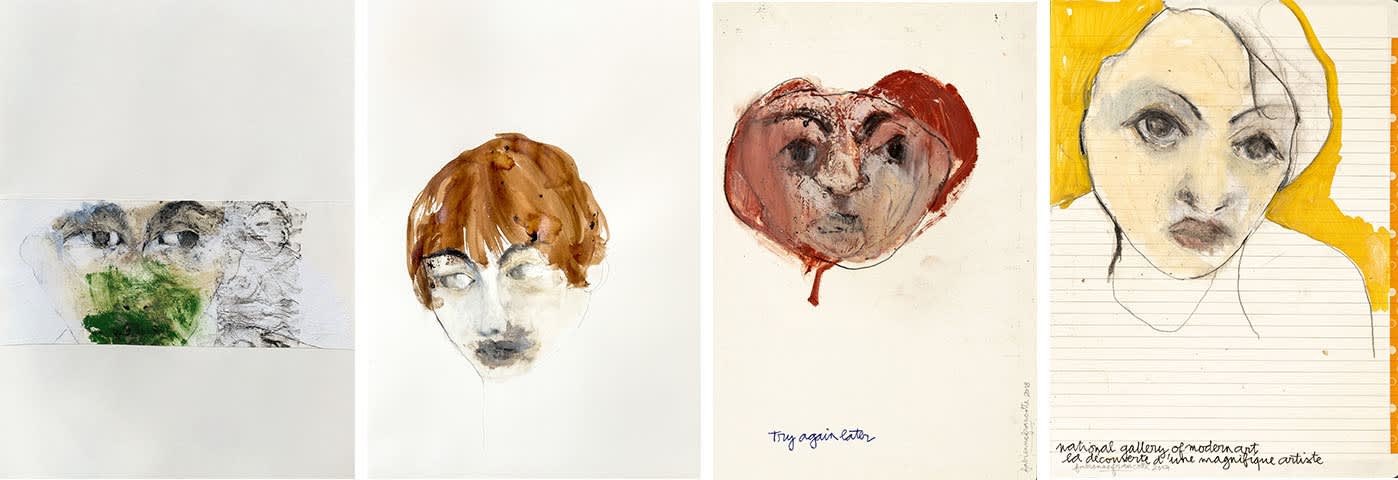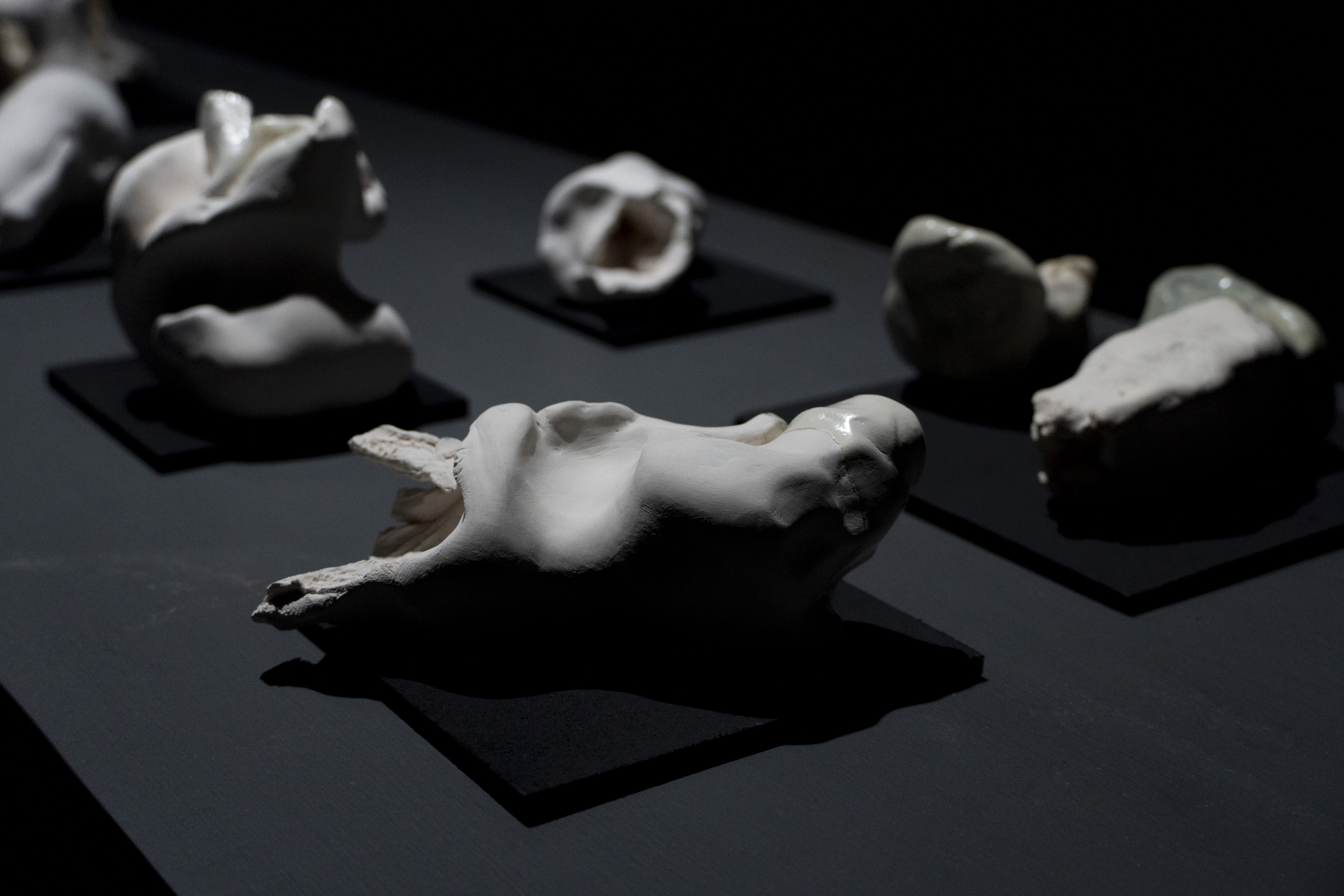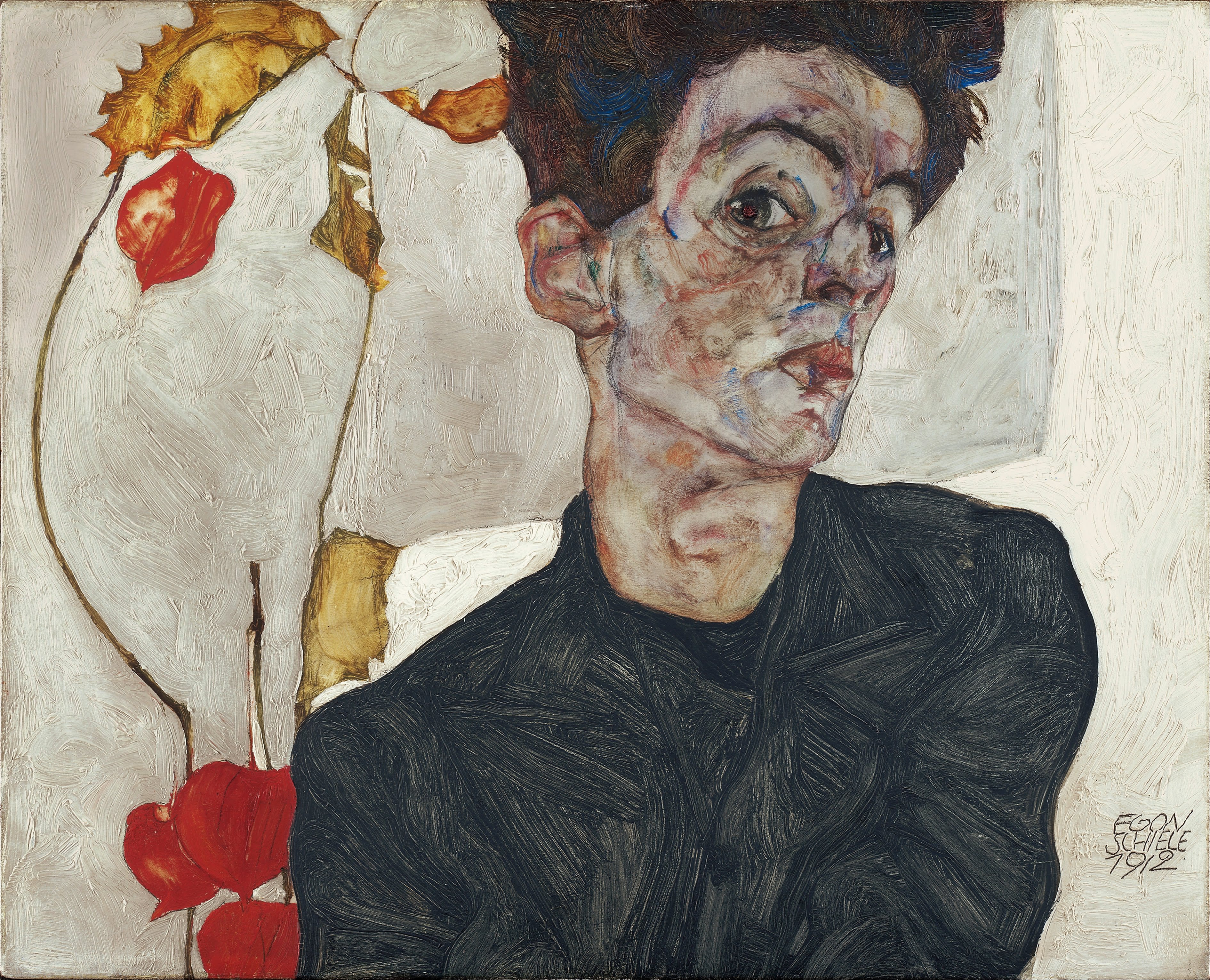|
|
How would you describe a day in your life?I read—art books, artist statements, novels, critics, and art press. I also journal. Most of the time, I leave a line in my notebook not just about what I need to do or where I need to go, but I copy things I’ve read that might inspire me later. I’ll revisit these notes, flip through the pages, and reflect.
I don’t draw or paint every day. Usually, there are many days of reflection, thinking, and journaling before I actually start to work. I also meet people—I need people, I need contact. Conversations, both speaking to them and listening to them, are important to me. These exchanges feed my thoughts, and I often hear myself say things I’ve had inside but never would have formulated that way. So, contact with others is always necessary for me—it’s something I actively seek. I also love to eat, drink, and make plans.
Fabienne's studio in Colombo, Sri Lanka
|
|
Since 1972 you have been documenting your life and artistic practice in notebooks and diaries. Share with us how you began creating these diaries and what makes it such an important part of your practice.
Around the same time, at school, we had to read and analyze Anne Frank’s diary. For me, it was like a discovery—where we could talk to an unknown person and deposit the intimacy of our very private stories in these books. I think that, at the beginning of adolescence, we are full of emotions, dreams, and plans, but we also have dark moods and desperate episodes, where everything feels magnified. I started journaling about all the important events—not just what I was going through or the facts, but mostly how they resonated inside me.
When I was overwhelmed with emotions, writing was a way to release the pain, the sorrow, and the disappointment about what I wanted to achieve. It was like a “lookbook” of wounds on paper. At that time, I was also doing some workshops on photography. I had my own lab, where I developed black-and-white photographs. I was gluing everything in—tickets, concert stubs, and souvenirs from the places I’d visited. I don’t know whether I was aware at the time of what it could produce or how it would influence my life. Writing was simply a day-by-day or week-by-week activity. I think the writing allowed for a kind of reconstruction. Diaries are like maps or fabric; later, they become boards for our personal stories. I am convinced that writing saves the soul, as it resonates within our body.
Artist's journal
|
How do you reflect on the many different experiences you have had in life and how that impacts your process?Between the ages of 20 and 50, I was just going with the flow, taking life in a light way. I was ready to take risks and open to doing anything. I had many different jobs—marketing, sales, and secretarial work. I had a degree as a Language Teacher, but I spent 10 years doing other things and traveling the world before returning to school to become a teacher.
I began observing students, reflecting on their body language, how we are shaped, our capacities, and the richness in each of us. I started reflect on these later in my life when I was around 50. There was a direct impact from the different episodes in my life, especially when I started to draw. I was 42. It was around 2000 or 2002, I think. I kept writing, but it was then that I began to draw and create collages. While drawing, other kinds of information started to come to me—things that felt very close to me. It was like measuring the temperature of your inner quiet, as we are always trying to behave as well-educated beings.But I didn’t truly make the connections between who I was, who I became, and who I am today until, let’s say, five or six years ago.
I think life is like a reservoir. You spend your time doing, accumulating, moving, and developing, and then, at some point, you sit down and analyze it all. It is wen you go backwards and start rewinding the machine, replay the tape of your life, that you have access to these indicators that are proofs that you are the product of all these experiences. When you reach your 60s and finally understand the richness of everything you’ve been doing. You see how it all comes together and adds depth to who you are and what you’re doing.
|
Text plays a significant role in your work. It seeps into the fluid intensity of your drawings; frequently existing side by side and enhancing one another. What would you say about how you employ these two formats in your work?I think there is a constant shift between writing and processing the work. Sometimes the text comes first—it’s like a reservoir or an inventory that jumps onto the canvas or starts a sculpture or shapes something. But I also think there is another kind of text that comes afterwards, once the work is done. It’s like extracting the essence of the reflection that was recorded through the text on these pages, and what I see when I look at the finished work. So, the two exist side by side.
It’s like one of those bicycles built for two people: sometimes you stop moving forward, but the momentum continues, and it takes you somewhere else. It’s a kind of machine that allows me to expand these activities—whether it’s painting, photography, sculpture, or whatever. It’s binary, and I need both sides to give the right value to the work. The words are the words, and the black line on the canvas is another story.
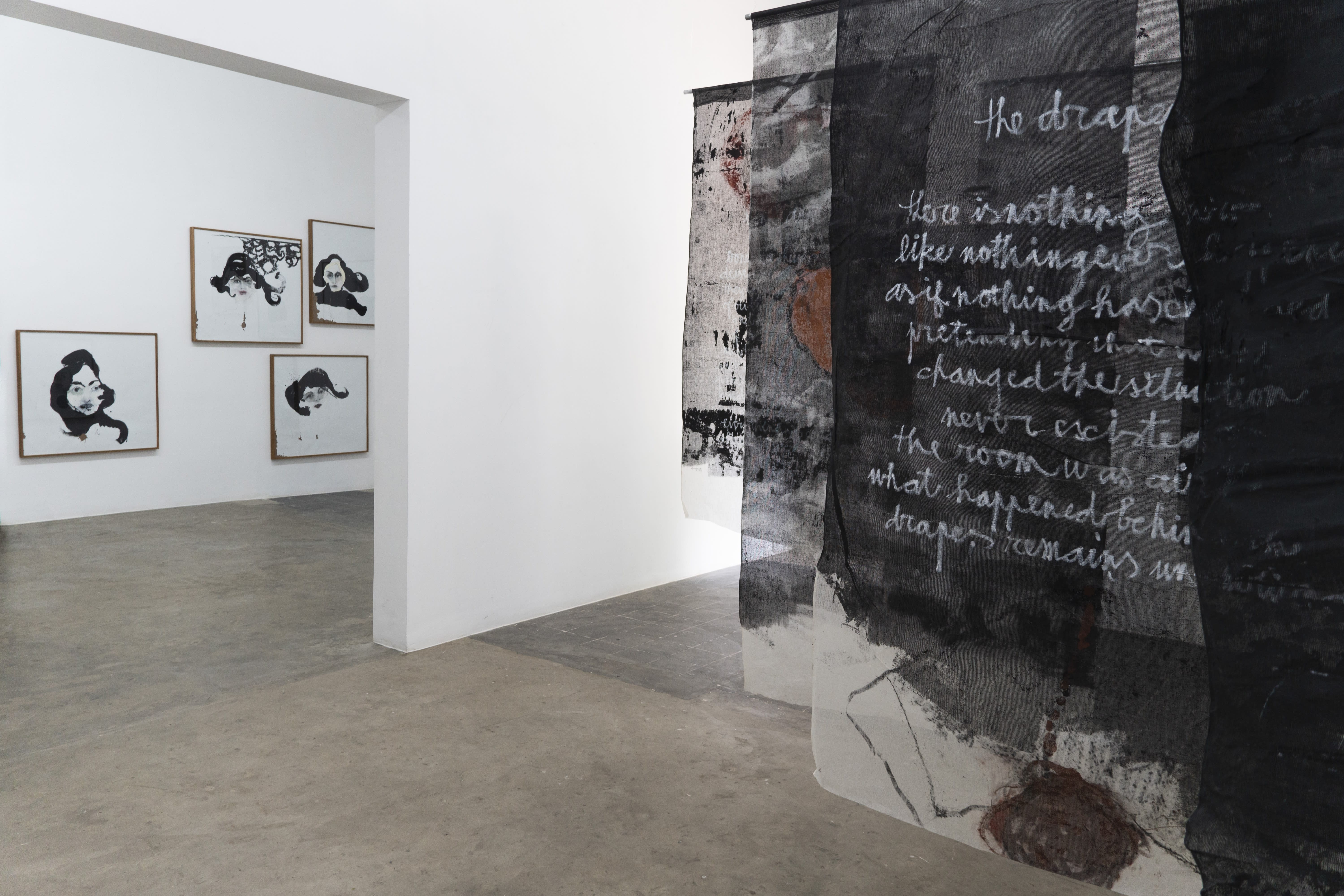 Still Life | Nature Morte, Saskia Fernando Gallery, 2022
|
You draw upon stories and experiences of strangers and close friends alike in your work and reveal an intimate world through your interpretations. What does gaze mean to you in your work?I think what I like to do in my work is reveal what is generally considered to be intimate, with a certain level of risk. I have always exposed myself. But the aim of all this has been to highlight how seemingly ordinary lives can sometimes contain the extraordinary. Through my experiences with strangers, foreigners, close friends—whether in Sri Lanka, Belgium, Bangladesh, India, or anywhere else—I had the feeling, when looking at them and their gaze without words, that I have become the custodian of others’ secrets.
For the last 10 years, meeting all these people, it wasn’t just their stories I was gathering—it felt as if we shared common stories, as if we were somehow alike. The only difference is that I speak and they do not. But we don’t always need words to exchange something very important. So much information is shared through the body, through the face, and in the way you behave. The gaze, for me, especially in Sri Lanka, is like a dictionary; it allows me to enter deeply and connect with their inner selves.
I Can Walk Mentally V, 2020, Mixed Media on Paper, 42 x 30 cm
I Can Walk Mentally IX, 2020, Mixed Media on Paper, 42 x 30 cm 25, 2020,Mixed Media on Paper, 25 x 17 cm 18, 2020, Mixed Media on Paper, 25 x 18 cm |
What is a medium that you enjoy working with the most?
I love to work with accidents and push myself out of my comfort zone. I’m always ready to experiment with new mediums. My favorite medium remains paper because it allows me to reconnect with myself. When I was six, during my first year of school, we had calligraphy lessons on Friday afternoons. It’s about the magic of the pen, dipping into the ink pot, and making marks on paper. Paper is also a very resilient material: you can draw on it, paint on it, and work with both oil and charcoal. When you place it under water, it tears apart, but then it gives you another perspective. Paper is flexible, and it’s not just another material. For instance, canvas is rigid; you have to stay within the framework it offers. I also love clay because you never know where it’s going to take you. I love the fabric sculptures I made for this exhibition. They were an absolute surprise, and I’d love to develop them further, but we’ll see how it goes.
Can you tell us why you occasionally use aged-material, such as old canvases in your work?
|
|
Fragility and trauma are recurrent themes that one encounters in your work. For example, it is evident in the sculptures you created for the Still Life - Nature Morte exhibition in 2016. Could you explain how you dealt with this theme?It is always the violent feelings that drive me to draw. I feel I am more focused on the layers of sadness within the human being than on happiness. In Still Life - Nature Morte, the thirty sculptures of ceramic kneecaps were a kind of psychophysical photography. They depicted how deep, how strong, and how unbearable the pain can be when we have knee problems. It was a way to invite the viewer to experience a weird, uncomfortable feeling, to depict both the seen and the unseen. I tend to think about trauma, abuse, and similar heavy subjects. We see them, but in a way, we don’t want to admit it. By using this materiality of an image in sculpture, we enter into physiology—it’s as if there is no distinction between the body and the mind. You see the thirty sculptures, and suddenly, you can feel what it is like to have gone through trauma.
Still Life | Nature Morte, Saskia Fernando Gallery, 2022
Additionally, I volunteered for two years at the National Institute of Mental Health (NIMH) in Colombo, where I worked with deaf children and adults during the bombing attacks in 2019, and more recently, I have been involved with supporting young pregnant girls. We don’t speak about the trauma, but we share it in a way. There is no future—it’s there, and it will never go away. My goal is to force people to think about it and not pretend it didn’t happen. It’s about inviting them to respond to others. I think we lack empathy in this world. My works are disturbing, but for me, I don’t think they are rude or harsh. It was a way to highlight a part of our anatomy to underline what pain is, and from what I saw, the connection people had was immediate.
|
|
You have worked alongside Rohingya refugees and those affected by the 2015 earthquake in Nepal. Collaborating with individuals who have experienced immense trauma or a deeply personal loss has been an important part of your journey as an artist. What do you hope to achieve through this process?I want to give hope and maybe even give them a voice, and also bring others into a collective life for physical and emotional investment. I think it’s a form of action. While drawing, painting, sculpting, you play a crucial role in humanity. We are living through difficult days around the world today. So for me, that empathy, that dedication towards these people, is a duty in a way—to represent them and not forget them.
Being the Other, Reflecting on the Five-Day Drawing Project with the Rohingya Community of Refugees, Edge Gallery, Dhaka, Bangladesh, 2019
Being the Other, Reflecting on the Five Day Drawing Project with the Rohingya Community of Refugees | National Museum, Dhaka, Bangladesh, 2019
There is a play of hide and seek in your work - a tussle between what can be expressed and made visible, and what cannot be expressed. The series, ‘The Thickness of Silence’ along with some of your work where you use calligraphy demonstrate this aspect of your practice. Can you tell us more about the intensity of emotions that prompt you towards this deliberate choice?I am full of emotions; however, I don’t think that the aspect of hide and seek in my work is deliberate. It's not a choice. I think I am always drawn to the moment of impact when I am deeply moved, hurt, or hit by a strong emotion. When I work, I try to slightly experience the gravity of my subjects. I evoke the blind spots of memory and consciousness, and I am certainly questioning the invisible. It is very difficult to explain; it's like walking on the edge.
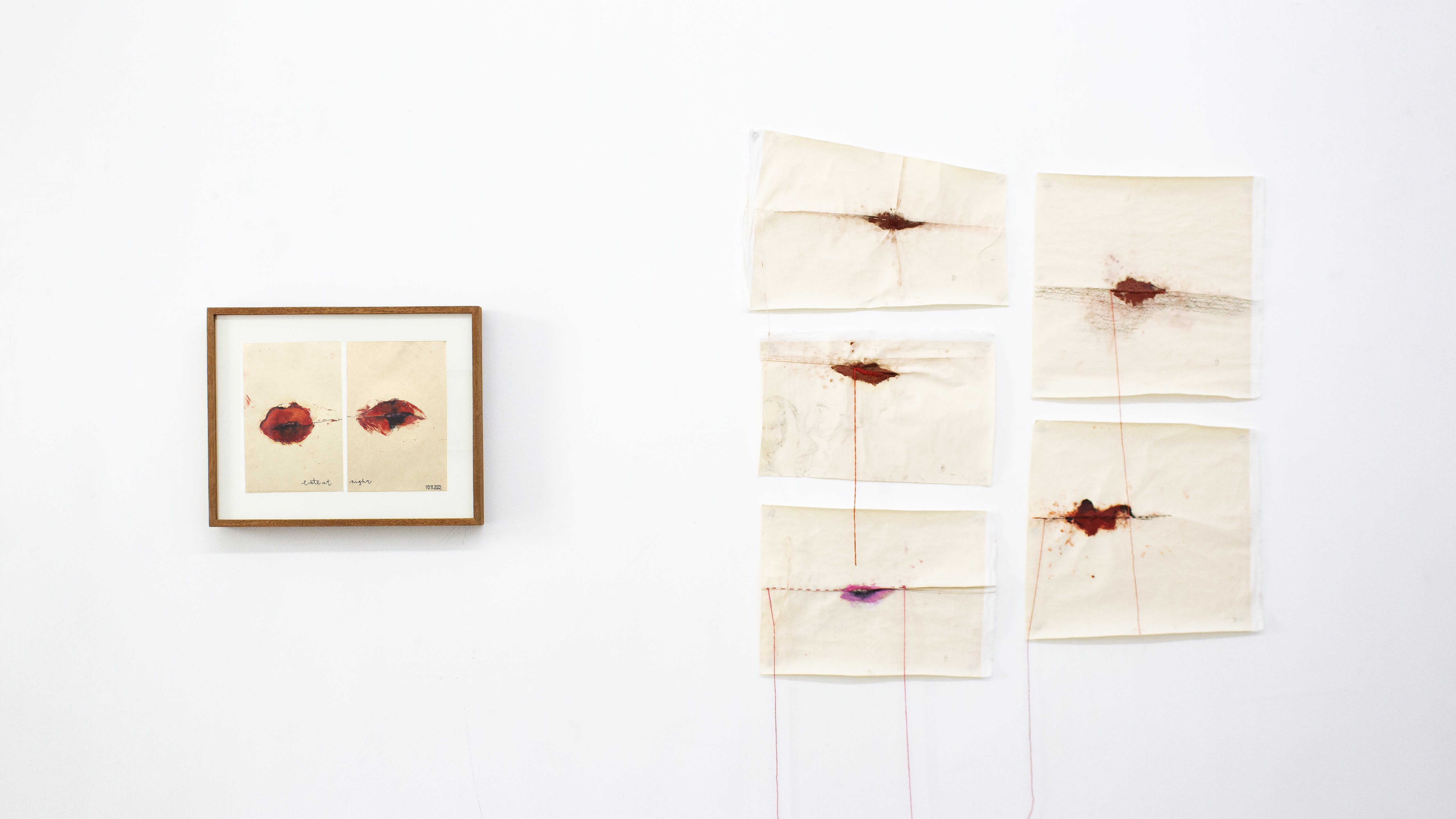 With my Back to the World, Saskia Fernando Gallery, 2023
|
|
How does travelling and living between Belgium, Greece, and Sri Lanka inspire your practice?Travelling between Belgium, Greece, and Sri Lanka is inspiring. I think when we move to another place, we become like a sponge and react accordingly. Greece is a very peaceful place, which gives me peace of mind. Sri Lanka is intense, and that’s the main place where I work. It is also where I have the biggest studio. I am on the other side of the world. I find Belgium to be more of an intellectual place where thinking becomes a very big activity.
Who is a living artist whose works inspire you the most?I’ll start with the first one: Marlene Dumas. I think I’ve bought and read every single book published about her work. She wasn’t as well-known 20–22 years ago, but she was publishing notebooks with her writings, which are as powerful as her drawings or paintings. What I loved about her was that she cultivates the imperfect and the unfinished. I think the fact that part of the image remains unpainted makes it more accessible. It remains open, and I believe a picture that appears unfinished is more inviting to the viewer. It’s as though her work has no final punctuation, yet it holds incredible emotional power that communicates directly with us. Everything in her work fluctuates between fragility and strength. I just love her work—she is also a beautiful human being, as seen in the interviews we have access to. She is so simple and so human. She’s like a model for me. I don’t particularly like that word, but yes, she is a model.
The second one is Sophie Calle. She’s French and of Jewish origin. She is a writer, photographer, conceptual artist, and installation artist. All of her work depicts human vulnerability. She deeply examines identity and intimacy; she is also very straightforward and moves us inside. I’ve written a lot about her. She has published numerous books and stories, not just statements. There was a recent exhibition in Paris in 2023 at the Picasso Museum. She emptied the museum and installed her three-story home inside, with everything she collected: her mother’s wardrobe, all her books, her private artworks, her entire art collection. Everything was cataloged, as if by a Christie’s auction house. The stories around it created an experience: a four-hour visit, where, when leaving the Picasso Museum, it took me hours to step out of her universe. Her work speaks to all of us in a very different way.
Then there is Francis Bacon, who is no longer with us. Through his work he could create an immediate sensation that reaches our nervous system. There is no compromise, and there’s a kind of brutal truth. I think the way he worked—with accidents, with the unknown—was like there was no previous plan when starting a new work. I work the same way. Not that I copy him, but I started reading about him much later, around 10 years ago. I think I’ve seen only one Francis Bacon exhibition, and it was disturbing. I think art is meant to provoke a sensation and open a dialogue. I don’t know if we speak about our own lives and everything we have inside us, but the fact that we open a chapter common to all that engages everyone is important. We all face the same problems. Bacon is a massive artist, a brutal one, and I also love the things he quoted in interviews, and how he survived a hectic life.
|
|
|
|
Egon Schiele, Self-Portrait with Physalis, 1915 |

